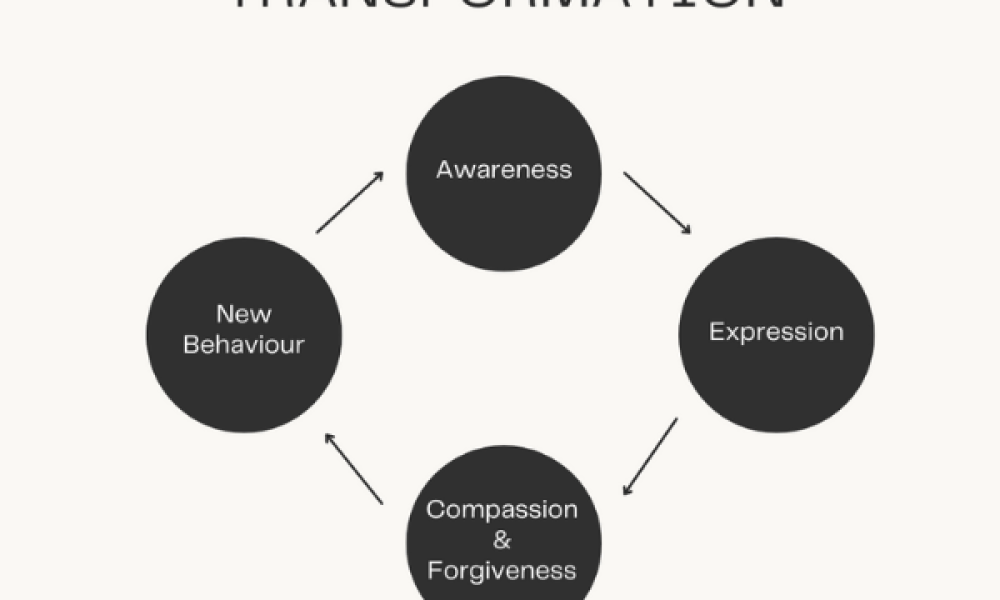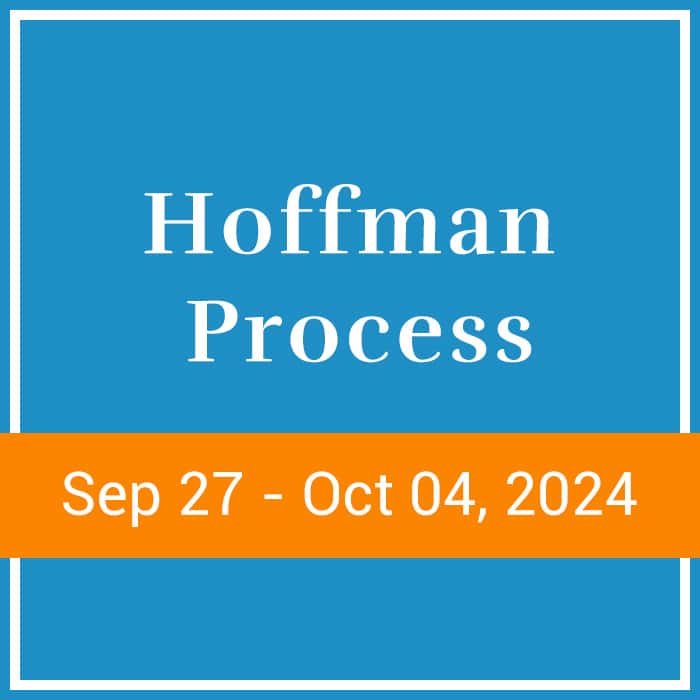Recycling refers to the action or process of converting waste into reusable material. What was once a plastic bottle is now a backpack. A metal can has become a car part. In the same sense, the Hoffman Recycling tool is a process of converting a negative behavioural pattern into a healthy behaviour aligned with our spirit. Even more, it’s the act of transforming an unconscious reaction into a conscious response.
Read on to find out how to practise this powerful tool and why it’s an important component to the Hoffman Process.
What Is Recycling?
Recycling is a Hoffman Process tool that combines mindfulness, visualisation, NLP, physiological state changes, and even intuition. It is the fourth step in the cycle of transformation, which consists of the following:
- Awareness: Awareness of behavioural patterns
- Expression: Creating distance from negative patterns through emotional expressive work (e.g. “I am not my patterns.”)
- Compassion & Forgiveness: Cultivating compassion for the children our parents once were by attuning ourselves to their suffering and letting go intergenerational pain
- New Behaviour: Making behavioural changes through tools like recycling
As famed Austrian psychiatrist Viktor Frankl reportedly said “ Between stimulus and response there is a space. In that space is our power to choose our response. In our response lies our growth and our freedom.” The first three steps of the cycle of transformation sets us up to be able to widen that space. Recycling allows us to become attuned to our intrinsic values and offers us a way forward when we are triggered in our life. It is a mindful centering to engage with oneself and others in a new behavioural manner informed by the values of our heart centre. Recycling is not ‘positive thinking.’ It only works because of the experiential work done beforehand.
How to Use Recycling to Change Negative Behaviour Patterns
To utilise the recycling tool, you must first become aware that you are stuck in a pattern, mood, or belief system that you want to change. This awareness represents the space that Frankl described. Here’s how you use recycling to change behaviour patterns:
Step 1: Identify the Pattern and Scene
- Close your eyes.
- Take a deep breath and breathe in the intention of connecting to your true self.
- Think of a pattern that you want to recycle.
- Recall a recent situation where that pattern was active in you (or maybe the situation is currently active in you).
- Whether the situation happened long ago, or it happened moments ago, visualize the scene in your mind as if you are watching a movie.Re-experience the situation, including how you felt in your body, what happened to your energy, and how the people around you are impacted by this energy
- Become conscious of your desire to be free of this pattern.
Step 2: Trace the Pattern
- Take a moment to recall how you learned this pattern. Who had this pattern in your childhood? Did you duplicate this pattern, or did you develop it in response to Mum, Dad, or another caregiver?
Step 3: De-Energise and Transform
- Tune in to how this pattern lives in your b Does it create a particular posture or tension?Are your shoulders slumped? Is your belly tight? Take on the shape of this pattern.
- Now exaggerate the shape. Amplify its intensity and sense its burden. Place your hands on your body where you feel the energy of this pattern most intensely. Keep them there.
- Take a deep breath and allow the energy of the pattern to move into your hands.
- Then put your hands together out in front of you as you hold the pattern between your palms.
- Vigorously rub your hands together, gradually increasing speed so you build energy and heat between your palms. This is the energy and heat of your pattern being transformed.
- When you stop, pull your hands apart and allow yourself to see something that represents the positive alternative behaviour between your hands. Allow it to exist in whatever form that takes—a sentence, a colour, a shape, or even a luminous energy. Accept it without judgement.
- If nothing shows up, ask your spiritual self directly what they would do in this situation.
- Now, take whatever appeared between your hands up above your head and, with your eyes closed, as if your body is transparent, gently start to draw this new object, phrase, or energy down through your head, through your torso, and all the way down to your feet. Allow the energy of the new behaviour to transform the pattern in your body.
Step 4: Embody New Behaviour
- Notice how you feel. What are the sensations? Allow this energy to expand within you with each breath.
- As you breathe, shift your body to reflect this new way of being. Take on the posture and fully embody the presence and aliveness of your spiritual s
- Now, in your mind’s eye, return to the original situation where the pattern was active and experience yourself moving through the scene from this new way of being.
- Notice how the sensations in your body have changed and how this changes the scenario. Your breathing may be deeper, or you may simply feel more relaxed as positive energy has transformed the experience in your body. This will become the new positive alternative behaviour used to face this and similar situations.
- In your own time, gently open your eyes and become present to your surroundings. Look around and feel yourself as more alert and connected to your new way of being.
Why Recycling Works
Recycling does not focus on what you do, but how you do what you do. The practice facilitates an actual state shift, in which “stuckness” melts away into a sense of relaxation as you embrace the contraction of the pattern and then consciously let it go.
To become aware of this contraction, you must consider how the pattern feels in your body. For instance, when you are stuck in state of criticising others, you likely have a frown on your face or feel a tightness in your shoulders. When you are scared, you may feel a tangle in your stomach, or a constriction in your throat. As you learn to shift out of these contractions, your physiology will also shift. This produces a positive feedback loop to your environment (e.g. if I change from being critical to being interested and inquiring, my energy will shift and others will pick up on this).
Recycling also helps to change your brain thanks to neuroplasticity. Research has shown us that the brain is not a predetermined or unchanging organ. Rather, it is an organ of adaptation; it adapts to the demands of its environment. Whatever you repeatedly sense and feel and want and think will slowly sculpt the neural structure.
How to Integrate Recycling into Your Life
Most people who learn the recycling tool at the Hoffman Process will practice it organically as a result of finding a deeper level of self-worth. They will have witnessed the value of spending some time with themselves daily. They will also know some patterns are stubborn and need time to transform. As they have become more aware of their own negative patterns and triggers, they will become more skilled in catching themselves in the midst of a reaction and making a choice to respond differently.
How Often You Should Recycle
Use recycling whenever you feel triggered and want to create an inner space to stop the reaction. Creating this space will allow you to be able to engage with your inner wisdom and respond in a healthier manner. You can do this multiple times a day or even less until the new behaviour sticks. Each time the new alternative is engaged, it will start to de-energise the old unwanted behaviour. After a while, you will no longer be activated by the trigger and no longer need the tool. But you can always turn to it in times of need.
Find out more about recycling and other tools by signing up for Hoffman Process or strengthen the skills you learned at the Process at the upcoming Retreat for graduates.
This article was contributed by Erica Garza. Follow @ericadgarza on Instagram
References:










